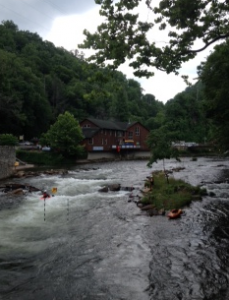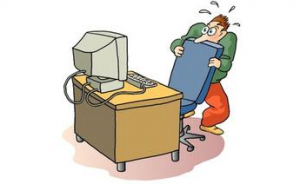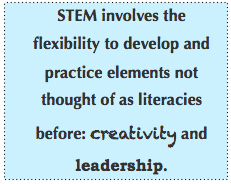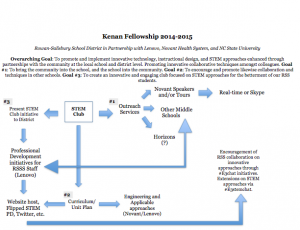Before you read this post, I just want to say you need to imagine reading this with the “Sound of Music” playing in the background, because truly “the hills were alive with the sound of music”this week!
Now that we have set the mood, lets talk NCCAT. It can easily be described by the recently coined phrase, “What happens in Sylva, stays in Sylva. Because there is no Wi-fi.”

…however, the hope is that what has happened here at NCCAT, DOES make it out of Sylva! (No “Vegas moments” here people.)
In all honesty, how does ANYONE choose a highlight from this week? It has been a week of inspiration, of renewed energy, and most importantly of GROWTH! To put it a more relatable view, it is comparable to a week of EdCamp, which if you haven’t attended one of these, is a large networking and collaborative effort put on by educators to better instruction (it is called the “unconference” of conferences, as it is PD that is personalized. Which means it is TRULY PD. Unheard of, right?) Translation: an educators dream come true!
Now imagine non-stop discussions on curriculum, STEM, policy, leadership, strategies, (and of course, a sprinkling of occasional conversations not related to education!) Not sure what could have a group of educators more pumped (?)
Highlights though? Items I want my students and colleagues to take back? I guess I can attempt to put this into a list. Although, not sure where to begin, so lets just start…
(1) Progress and growth is no longer a choice. It is now how well you find the resources and tools to grow, and how well you are using it to benefit not only just yourself, but others. The “others” part is KEY!
(2) STEM is JUST a label. I have always had a hard time understanding why we needed to label STEM content areas as “STEM” to begin with. When I attended a session held by Justin O., a member of Wake Co. Schools, and he spoke similar thoughts, all I could think was, “Yes! Preach it!” I mean shouldn’t all educators be “teaching” STEM? Shouldn’t all learning be “inquiry” in process having students thinking on their own? Shouldn’t ALL areas then be labeled “STEM?” Just some food for thought…
(3) Lets talk Twitter. I LOVE Twitter. I’m not ashamed to say I may be mildly (or really) obsessed (probably should be in a support group…) So I don’t go on a Twitter rant, I’ll keep it short: it is transformative for instructional growth in the education realm. And when you meet Twitter enthusiasts from your PLN, it is literally like the Sound of Music became the soundtrack of that given moment. So how does this relate? It happens that several members of my PLN are Kenan Fellows, too. How incredible is that?! (There may have been some squealing involved when we met.)
(4) Growing means risking! Not sure anything can compare to the lessons learned from a rafting trip down the Nantahala (…so maybe those may be left on Nantahala, and be “Vegas moments?”)
(5) Promotional plug! (Sorry, you have to put at least one in, right?) Discovery Education is packed FULL of resources, particularly for literacy; I would inquire within your School District if it is available (because really it’s invaluable.)
(6) That as educators we need to convey the message to our students, “we expect you to fail, but not to quit!” Think about that. HOW can that transform a classroom? Your growth as an educator? Your schools growth as a learning hub? Your Districts growth for the overall community?
(7) Understanding that not all educators want to change, or will. This is an area I truly struggle with, and I know I take to much to heart. To have grown these past few days with those who share similar struggles has helped me to better understand I should be receptive to those who are willing, and with time, change may occur. Lead by example, you know?
(8) The fellowship that a fellowship brings! I could share numerous resources, Apps, strategies, etc. on here. But really what I want to share is that there ARE educators out there who are trying to change the profession for our students; who are trying to become transformative for our students and staff. Transforming the education climate means becoming advocates for instructional strategies, curriculum, and approaches that impact students (and, while many may not want to hear this, are “data driven!”) This fellowship has the ability to push us as educators, to risk more as educators, to become better students for OUR students!
So my highlight of the week? Not the amount of laughter or adventure we received (…or really the geek sessions on education! Although, to be honest, that was close.) It’s knowing that I am blessed with an incredible support network of INSPIRING educators. It’s knowing I have an incredible amount to grow as an educator, and I now have the resources/support necessary to become the educator I need to be for the students within my District. It is knowing I can answer one simple question, which I’ve often wondered since Day 1 in the classroom:
“What can be more powerful than a group of educators optimistic, passionate educators learning, sharing, and growing together?”
Nothing can possibly be more powerful! So now the question is, how do we make this a reality for all communities?
RMS





